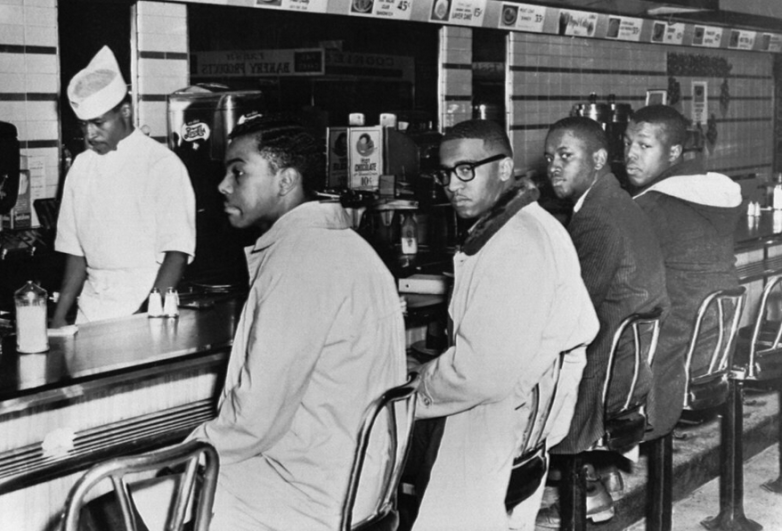60th Anniversary
Greensboro Sit-in
Greensboro Sit-in


60 years ago, black students staged a sit-in at a segregated lunch counter. Google Doodle commemorates the protest that changed history
February
1’s Google Doodle depicts the “Greensboro Four,” who protested racial
segregation through a sit-in movement at the Woolworth’s lunch counter
during the civil rights movement.
(CNN)Sixty
years ago, four African American college students quietly sat down at a
whites-only Woolworth’s lunch counter in Greensboro, North Carolina,
and waited.
They kept waiting, despite receiving no service and
requests to leave. The next day, they came back and waited all over
again.Within
three days of their protest beginning, more than 300 students joined
the “Greensboro Four” in their sit-in. In the following months, their
actions sparked a wave of similar demonstrations in restaurants and
other segregated spaces throughout the South, transforming the fight
against Jim Crow-era segregation and marking a turning point in the
civil rights movement.
Saturday’s doodle comes from the Compton-based artist Karen Collins, who is also the founder of the African American Miniature Museum.
This doodle is actually a photo of a diorama that depicts the
“Greensboro Four” protesting racial segregation at the Woolworth’s lunch
counter on February 1, 1960. “Organized
by four Black college freshmen, the protest against segregation served
as a catalyst for similar demonstrations throughout the nation,” Collins
wrote in a blog post. “Today’s Doodle diorama not only pays homage to
the sit-in, but also to everything that came as a result: changes in our
country to make it more possible for ALL Americans—no matter their
race, color, or creed—to live to their full potential."Collins captures black history through dioramas Collins
has been creating dioramas that capture moments in black history for 24
years through the African American Miniature Museum, a project she
started with her husband Eddie Lewis.Collins
had always wanted a dollhouse as a little girl, but as the daughter of a
single mom, her family couldn’t afford it, she wrote in a blog post.
When she bought her first dollhouse 40-some years later, she discovered
her passion for using dioramas to tell stories.
That passion gained a new meaning when
her son was incarcerated, she wrote. In the midst of her pain and
anguish, she started the African American Miniature Museum.
The
museum began as a mobile project in the 1990s, when Collins displayed
her work in venues like schools, libraries and churches as a way of
contextualizing black history for children – and today, she continues
to operate the museum from home. Collins says on her website that she
hopes to have a permanent location someday for the more than 50 dioramas
she has created, which depict events from the Middle Passage to America
to the Black Lives Matter protests."For
me, the museum was a way to turn the negativity into something positive
and share the stories of our ancestors’ strength and perseverance
through hardship,” Collins wrote in a blog post. “I want young people to
learn about those that came before them who sacrificed to help make the
lives they live today possible. Most importantly, I want them to see
that we each have the power to make it through difficult times to thrive
and hopefully make things better for those who come after us.”
https://www.cnn.com/2020/02/01/us/google-doodle-greensboro-sit-in-anniversary-trnd/index.html

No comments:
Post a Comment